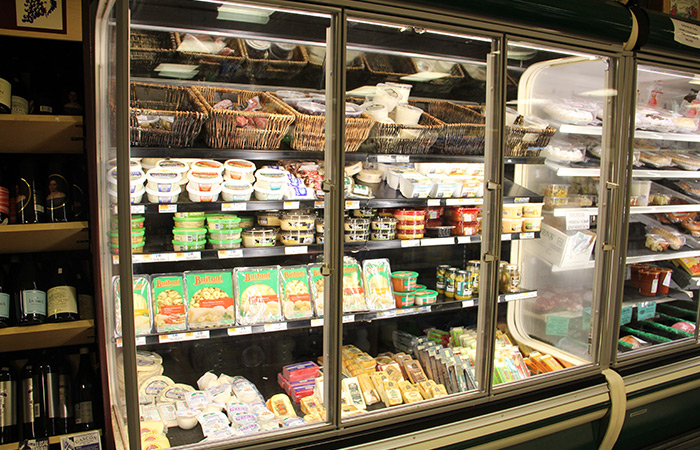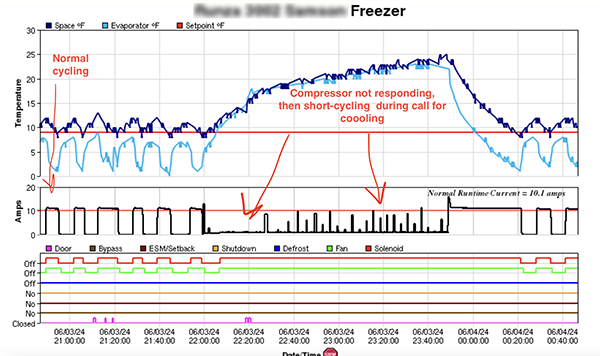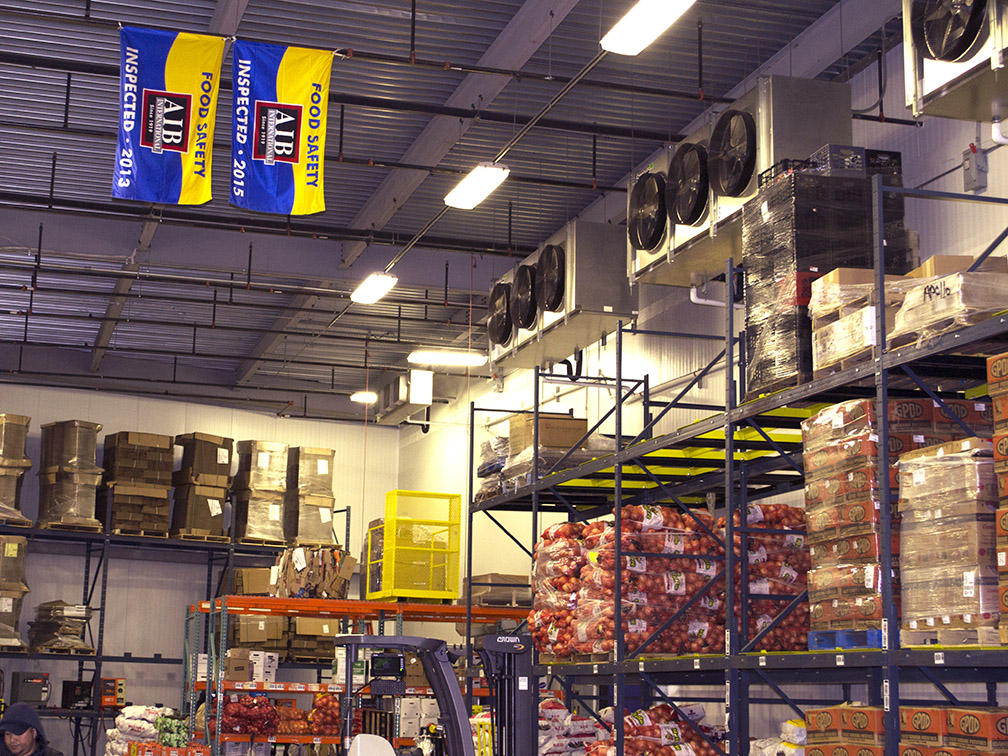Energy costs. Shopping experience. Product quality and freshness. For the grocery and convenience store owner or professional, these are three things constantly on your mind and wrestling for predominance. And in your industries, one area where all of these seem to pop up over and over is in display cases – cold-food wells, medium-temperature vertical displays, and open, multi-deck shelved units.
Commonly-held beliefs would indicate that the idea of closing these display cases by adding glass doors is a death knell for business—that the glass doors will create an impenetrable wall for shoppers to get through to buy the product. But in reality, glass doors can affect multiple aspects of your business positively.
Here are four of those positive impacts:
1. Improved Product Freshness and Quality (and Customers Perceive it)
When it comes to the shopping experience, it shouldn’t surprise anyone that customers are seeking out the freshest, best-looking products in whatever case they’re standing in front of. Whether it’s comparing packages of ground beef or inspecting produce for its leafiness or hardness, your shoppers want the best of the best.
So, as it pertains to the appearance and freshness of your products, an open display case introduces some issues that you may not have had the time to consider before.
Many of us are aware of the “danger zone” – the temperature range of 68-degrees to 86-degrees Fahrenheit where bacteria is proven to grow at maximum rates1. And we may even be aware of the fact that it’s especially treacherous for meat: “Temperature has an even more profound effect on the spoilage rate of meat. Beef at 5°C (41°F) spoiled three times faster, and beef at 10°C (50°F) spoiled five times faster, than beef stored at 0°C (32°F). High meat surface temperatures not only encourage psychotropic bacteria to grow exponentially, accelerating the rate of discoloration and spoilage, but also provide ideal conditions for the growth of food borne pathogens such as Salmonella.”
Where open display cases affect the food temperatures is in the fact that meat stocked higher (closer to the display case lights) and closer to the aisle (exposed to ambient heat of the aisle) may very well have different temperatures than what your case’s thermometer is telling you.
“Various studies have found that surface temperatures of displayed meat are often as high as 10°C (50°F), with fluctuations from 25°F to 61°F (-5°C to 16°C) and internal temperatures sometimes above 50°F or 10°C. These fluctuations can be caused by the intensity of the display case lighting as well as defrosting cycles in the refrigeration display case, the temperature of the room, the design of the display case, and the location of the meat within the display case (meat near the top is warmer than meat at the bottom of the display).
Closing the display cases will allow the number of outside factors to be reduced and the temperatures to be more closely monitored and controlled. If the temperatures can be more tightly controlled, then visibly, your products will benefit. They will have an increased shelf life by 1-3 days and they will maintain their “fresh” colorization, making them more appealing to your shoppers.
2. Reduced Energy Consumption by Refrigeration System
According to various studies, commercial refrigeration accounts for between 40% and 60% of grocery and convenience stores’ energy costs. While one might think that large refrigerated spaces like walk-in freezers and coolers consume and waste the most energy, it’s actually the medium-temperature, open-display cases that are the biggest culprit. Due to the outside factors briefly touched upon in point #1, these open cases use massive amounts of energy to maintain their temperatures, not to mention the significant amounts of cold air spilling into the shopping aisles.
Data curated by the Dover Corporation shows that adding doors and closing the cases can reduce their energy consumption by up to 70%2.
And according to tests conducted by the DOE, the biggest factor affecting open cases’ energy usage is the act of infiltration3. In their tests, infiltration accounted for 82% of the refrigeration load. “The infiltration load of the display case refers to the entrainment of warm and moist air from the room, across the case air curtain, into the refrigerated space.”
These tests were conducted at six supermarkets and the results showed that installing glass doors reduced the case’s total cooling load by 27.5%3.
There is obviously a convergence of reasons #1 and #2: glass doors reduce infiltration, lowering energy consumption and maintaining more consistent product temperatures that result in improved product quality and fresher appearance with longer shelf life.
3. Happier and More Comfortable Shoppers
Have your customers ever stood shivering in an aisle due to the open cases, before simply grabbing the first product in reach and bolting for a warmer part of the store? As we all know, keeping customers comfortable and hanging around a specific section of the store increases their likelihood of a purchase from that section. We go through great lengths to achieve this – generally in the form of using more energy in lighting and space heating to offset the cold air spilling out of the cold cases.
With the long-held belief that glass doors create a “barrier” between shopper and product that hurts sales and reduces browsing time, most owners don’t give a second thought to spending more money in those other areas instead of considering the bigger picture and proven positive effect from closing the cases.
“In fact, some supermarkets today take extraordinary measures to keep customers comfortable at significant additional energy and financial expense. They do things like heat the floors in aisles with open cases, or keep the heat running all year round from ceiling units positioned in those parts of the store – all in an effort to offset the chill temperatures created by open case refrigeration units.”
Aesthetically, modern glass door designs can improve the appearance of products within the case. Products look fresher and LEDs lining the doors can “show them off” with more efficient, brighter lighting. This could lead to better customer retention and provide a clear competitive advantage that does not limit sales volume but actually enhances profitability.
4. Positive Environmental and Sustainability Effects
The world’s population keeps growing and our resources keep dwindling. Nowhere is this more prevalent than in food availability and food waste. Whether as a result of customers throwing out food that spoils in their fridge, or stores throwing out food that spoils on their shelves, simply too much is being wasted. In the U.S. alone, we generate 36 million tons of food waste each year2.
According to data from the USDA, 12% of those 36 million tons occurs at the retail level4(29% occurs at the consumer level but that’s a topic for another discussion). Consider the energy consumed before perishable product reaches to store shelves, only to be thrown away due to spoilage.
The areas highlighted in this blog post are all intertwined and add up to a cumulative positive impact on your ecological footprint and the broader spectrum of sustainability and food availability. Glass doors have been proven to reduce spoilage and waste.
Glass doors lower the amount of energy consumed by your business, shrinking your ecological footprint and lowering your dependency on resources. This results in a recapture of money spent on wasted energy and converting it into profit added back into your bottom line, making it available for further economic investment.
We hope this blog post serves an informative introduction to why closing your medium-temperature display cases makes sense. It has a positive impact on multiple areas and can actually increase business despite long-held perceptions about glass doors. If you can think of any other ways glass doors can benefit a business, we’d love for you to share them with us.




